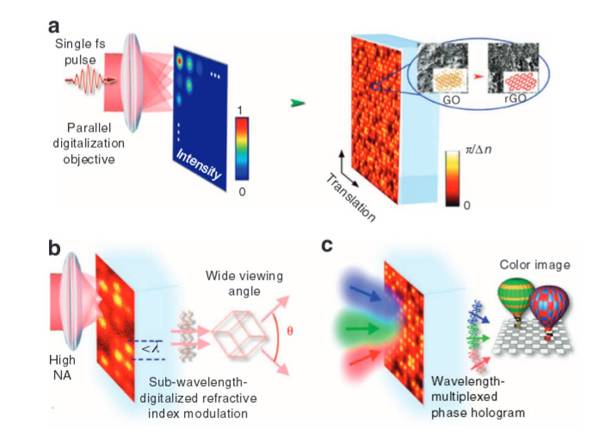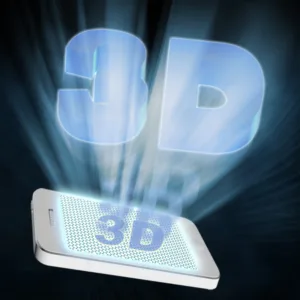Holography is the holy grail of real 3D imagery, but making 3D images acceptable to the consumer market has so far been out of reach. Now researchers at Swinburne University of Technology have shown that graphene may be a basic material that will allow the development of the next generation 3D displays.
The Swinburne university works together with the Beijing Engineering Research Center for Mixed Reality and Advanced Display, the Environmental Engineering & Queensland Micro- and Nanotechnology Centre, in Brisbane, and the State Key Laboratory of Precision Measurement Technology and Instruments, Tsinghua University, Beijing. The technology is described in detail in the article “Athermally photoreduced graphene oxides for three-dimensional holographic images” published by Nature Communications.
The article is a pure research article that describes a way to partially reduce graphene oxide layers with a femtosecond laser pulse. This allows a subwavelength-scale contrast in refractive index through an athermal photoreduction process. This is described in the following image.
 Source: Swinburne University
Source: Swinburne University
The key to the process is that they are able to create changes in the refractive index of the graphene layer in the sub wavelength range, which allows for a wide viewing angle of the resulting hologram. They also demonstrated full color images with wavelength multiplexed approach. As with all real holograms the user does not have to wear special glasses to see the resulting image.
The paper describes the scientific background in more detail and shows results of material behavior in respect to the fluence of the laser radiation. The change in oxidation state changes the electron density and therefore the refractive index of the material in that location. Shaping this zone correctly, creates nanoscale optical elements that can be used for 3D displays, for example.
Of course this kind of technology is currently limited to static images, however the material itself could also be used to create nanoscale optics for flat panel 3D displays. In addition they also discuss that they see the possibility of photoreduction by laser in the presence of photocarrier generators to create a reversible reduction and oxidation of graphene oxides. This would create holographic imaging in addition to applications in optical data storage and information processing. All in all this may lead to devices and technology that we normally only see in sci-fi movies. Don’t expect any consumer devices soon though. – NH

